18 Wild Animals in Congo [Wildlife in Congo]
Want to know more about the wildlife in Congo?
Discover 18 wild animals in Congo in this post, as well as interesting facts about them. 🇨🇬
Learn All About Congolese Animals
Ready to learn all about Congolese animals?
I’ve always been fascinated by animals and by how they can be so different from one country to another. In this guide, we’ll focus on the many animals Congo has on the land, in the sky, and underwater.
I’ve split the guide into 6 categories:
- Native animals from Congo
- Endangered animals of Congo
- What is the national animal of Congo?
- How many animals native to Congo?
- How many lions are in Congo?
Let’s dive in right away with our first category!
Native Animals from Congo
Congo, widely known as the Republic of the Congo or Congo-Brazzaville, is an African country located in the western part of the continent, below the Sahara (not to be confused with the neighboring Democratic Republic of the Congo). It gained independence in 1960, as it used to be a French colony. It is bordered by Gabon, the Central African Republic, Cameroon, Angola, and the Democratic Republic of the Congo, and its biggest city and capital is Brazzaville, which counts more than 1,696,000 inhabitants (but more than 2,300,000 if you include the metropolitan area).
An interesting part of the country that I wanted to tackle is its wildlife. In light of that, I have listed the best of it, and I hope you will love learning what animals live in Congo.
Here’s the Congo animals list.
1. African leopard
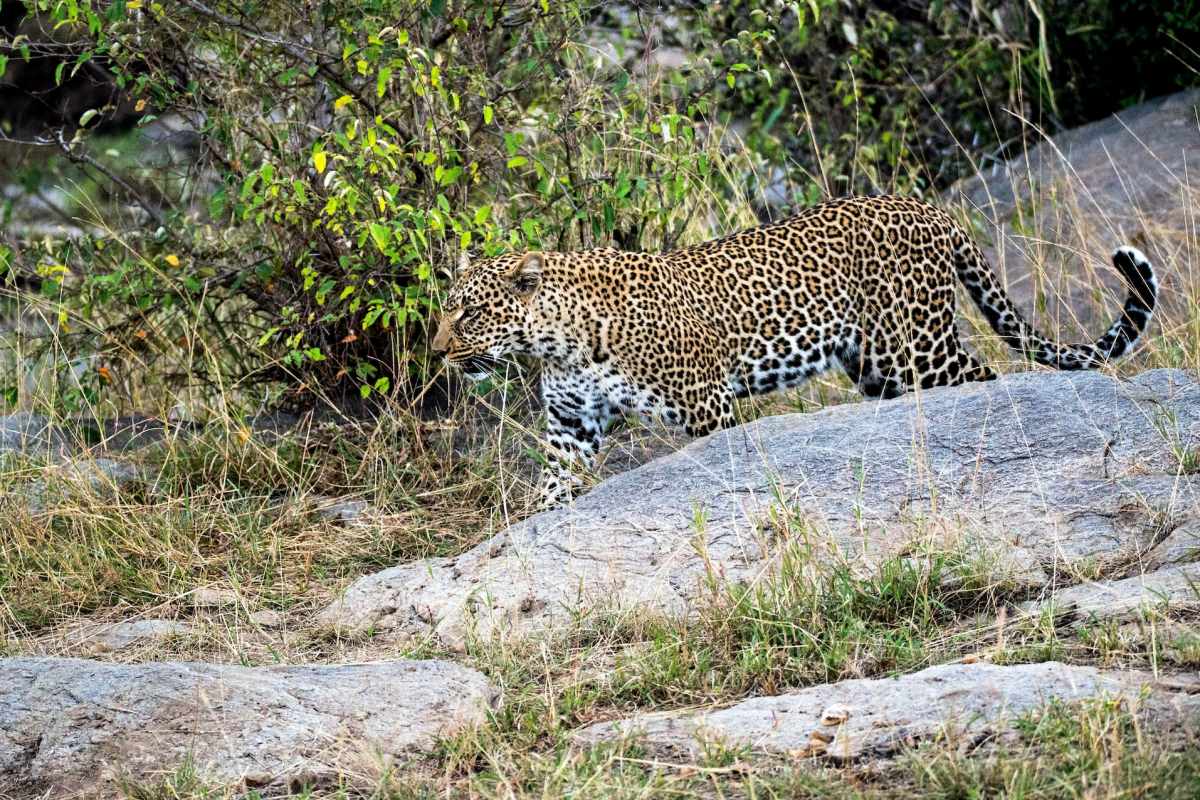
- Name: African leopard
- Scientific name: Panthera pardus pardus
- Conservation status:
Leopards, as a whole, are some of the most dreadful but also impressive animals from jungles around the world. The African leopard is the most widespread subspecies, and it can be found throughout most of sub-Saharan Africa.
It is a large species of wild cat with relatively short legs but a long body. Even though it looks like the jaguar from South America, it is smaller and has small spots over its body.
2. False killer whale
- Name: False killer whale
- Scientific name: Pseudorca crassidens
- Conservation status:
Most people tend to forget this, but despite how diverse and interesting the fauna is on the land in Africa, there are also countless mysteries around the continent, in the water. And since Congo has a coastline, there are false killer whales within its territory.
The false killer whale is an aggressive species of oceanic dolphin (especially in captivity), and a highly social animal. Its name comes from the shape of its skull that it shares with the “real” killer whale, the orca.
3. Orca
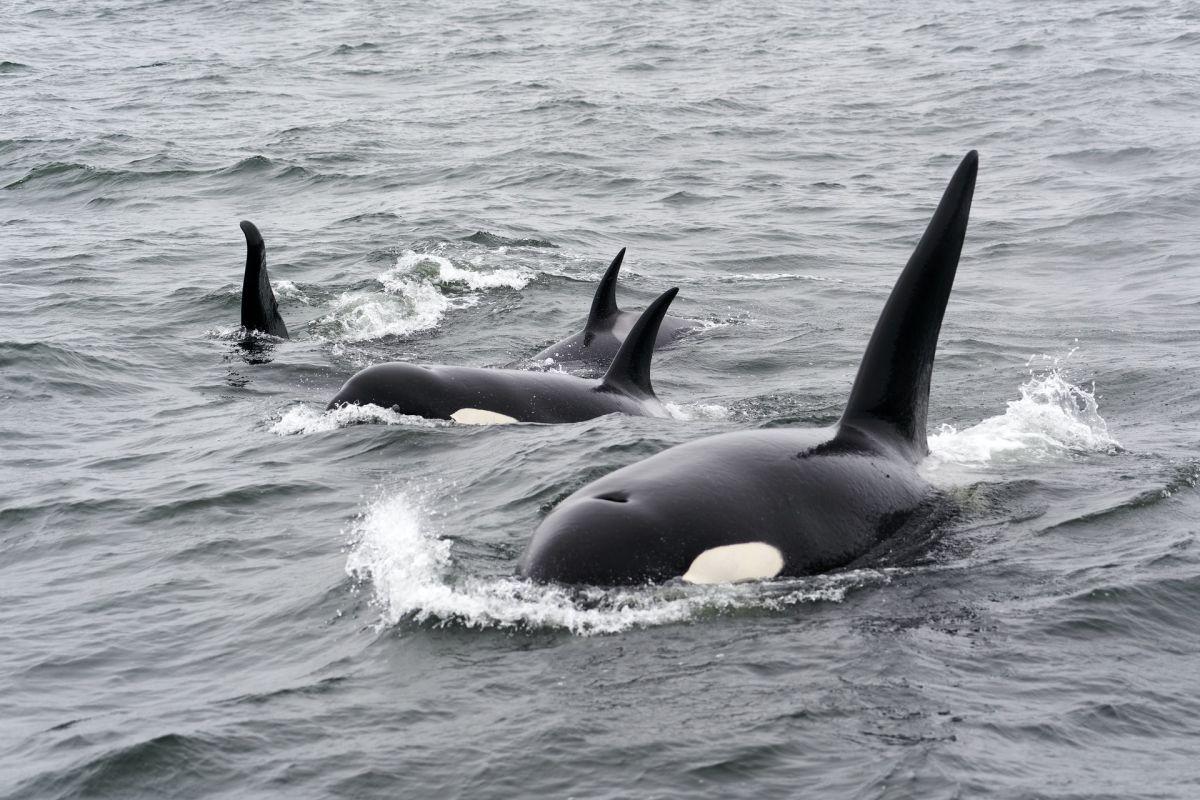
- Name: Orca
- Scientific name: Orcinus orca
- Conservation status:
Orcas can be found all around the planet, in all oceans and most seas, but they are seen off the coast of Congo. Also known as the killer whale, this large-toothed whale is a particularly efficient predator.
Despite its name, it does not usually feed on whales, but rather hunts for fish or sea mammals such as seals or dolphins. It is an apex predator that fears no one and is a highly social species.
4. African golden cat
- Name: African golden cat
- Scientific name: Caracal aurata
- Conservation status:
The African golden cat is a species of wild cat endemic to the rainforest areas of western and central Africa. Sadly, it is listed as vulnerable because of bushmeat hunting and habitat loss through deforestation.
Its fur is chestnut or reddish-brown, and it lives in tropical forests at up to 3,000 m / 9,800 ft. It is not to be confused with the caracal or the serval, though they are close relatives.
5. Serval
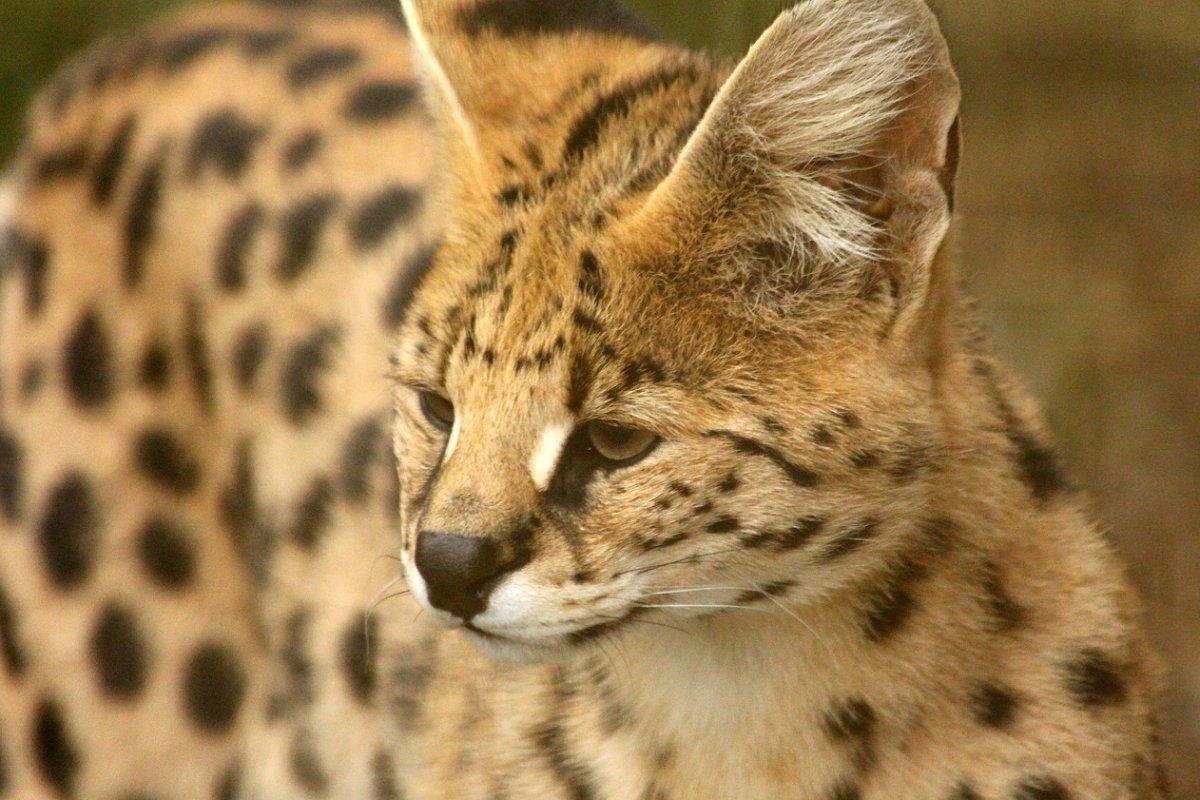
- Name: Serval
- Scientific name: Leptailurus serval
- Conservation status:
As you just saw, the serval is a close relative to the African golden cat. It is also a species of wild cat native to Africa, but it is much larger. Outside of the Sahel and the rest of North Africa, it is quite rare, but can be seen throughout the rest of the continent.
Because it lives in protected areas where hunting is prohibited, the serval is considered of least concern for now.
6. Giant pangolin
- Name: Giant pangolin
- Scientific name: Smutsia gigantea
- Conservation status:
Pangolins, or scaly anteaters, are a truly unique family. They are the only mammals with large protective scales covering their skins, and the giant pangolin is the largest of them. All pangolin subspecies are threatened, on a more or less critical level.
The giant pangolin lives in lots of countries, in central and western Africa. Most of the time, it can be found in the savanna, the forest, or the rainforest, where there are large termite populations and water bodies.
7. African brush-tailed porcupine
- Name: African brush-tailed porcupine
- Scientific name: Atherurus africanus
- Conservation status:
The African brush-tailed porcupine is a species of Old World porcupine native to most of central and western Africa. Even though it is an important part of bushmeat hunting, it is still considered of least concern due to its very wide range and its large population.
Usually, this animal lives in small family groups of around 8 individuals. Like other porcupines, the African brush-tailed porcupine uses its quills to defend itself and its family group.
8. Western gorilla
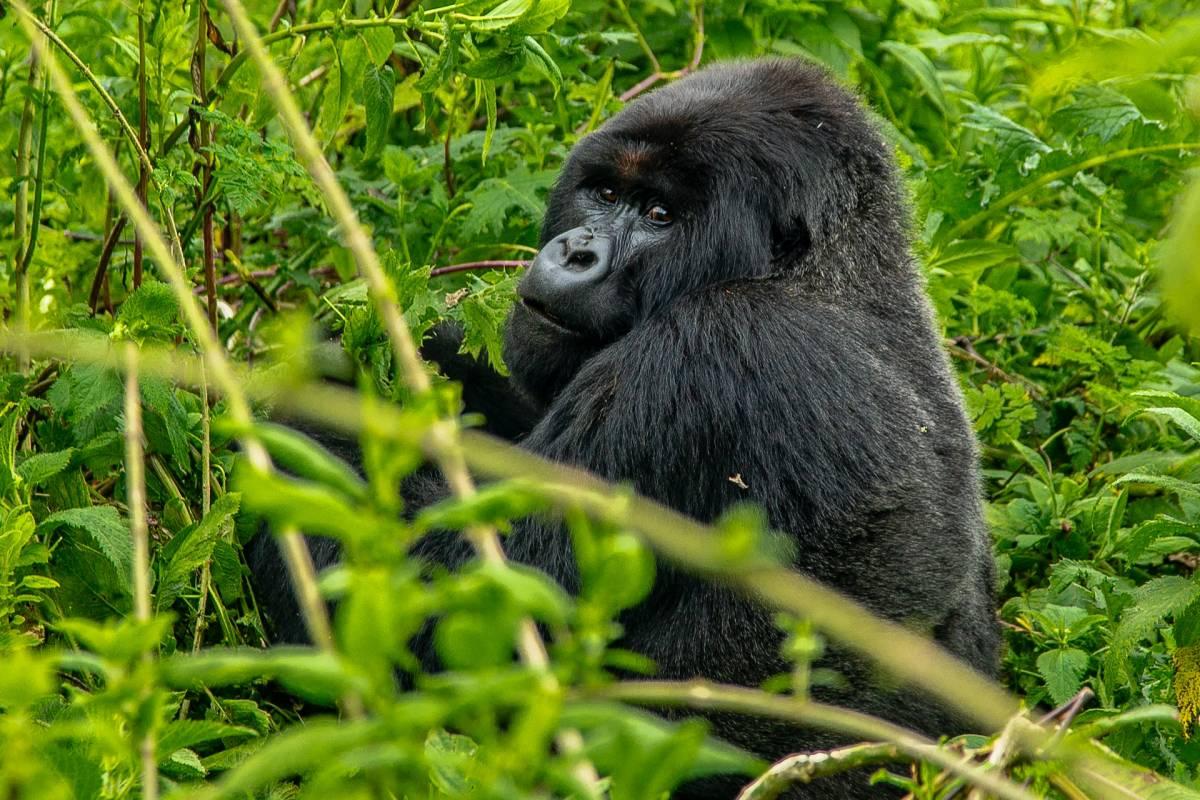
- Name: Western gorilla
- Scientific name: Gorilla gorilla
- Conservation status:
The western gorilla is one of the largest and strongest species of primate on the planet. It weighs around 168 kg / 370 lb, and there are only two subspecies of it, both considered critically endangered.
Despite western gorillas living in protected areas, their population was decimated by the Ebola virus and declined by a third in only 15 years. On top of that, civil wars, poaching, and commercial logging are all serious threats to what could become an extinct primate.
9. African manatee
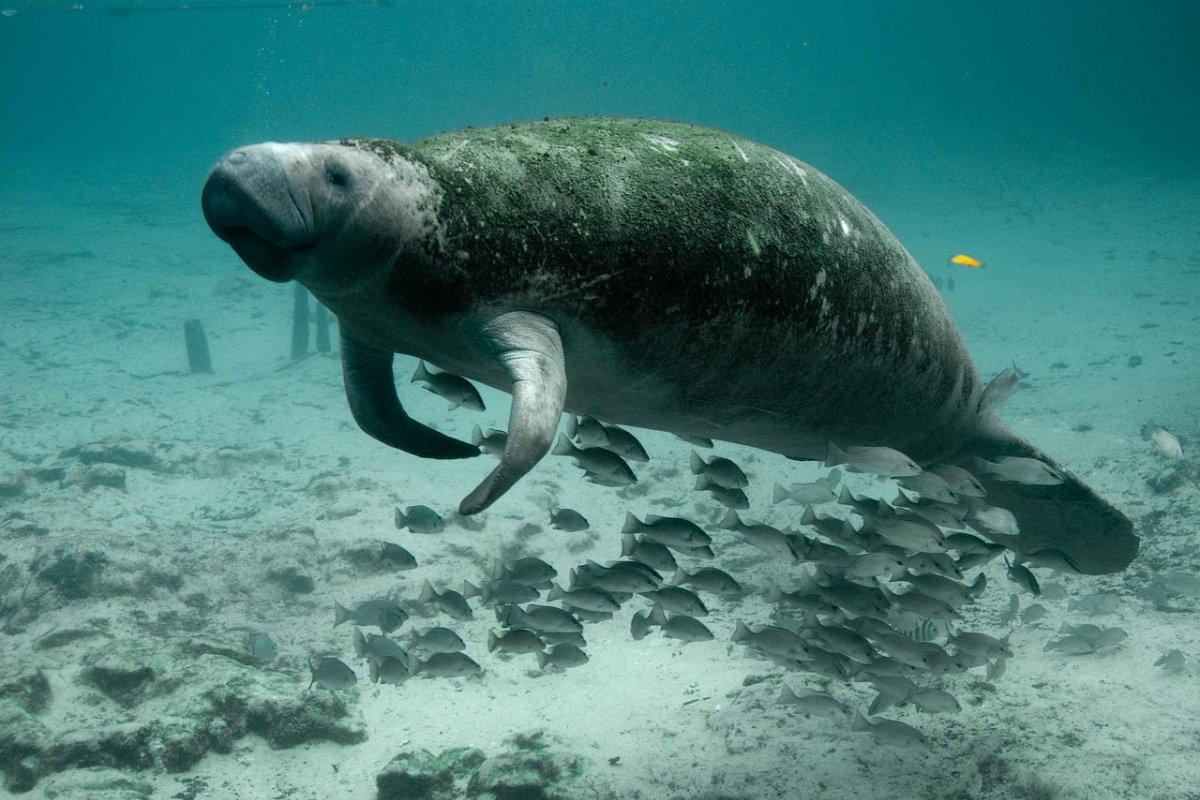
- Name: African manatee
- Scientific name: Trichechus senegalensis
- Conservation status:
The African manatee, also known as the West African manatee, is a species of manatee native to most of the western coastline of Africa, including Congo. It is the only species of manatee that can be found in the Old World, which is made up of Africa, Europe, and Asia.
The African manatee is an herbivore, but can occasionally feed on mollusks, fish, and clams if needed. It is greatly valued by poachers for its meat, bones, skin, and oil.
10. African forest elephant
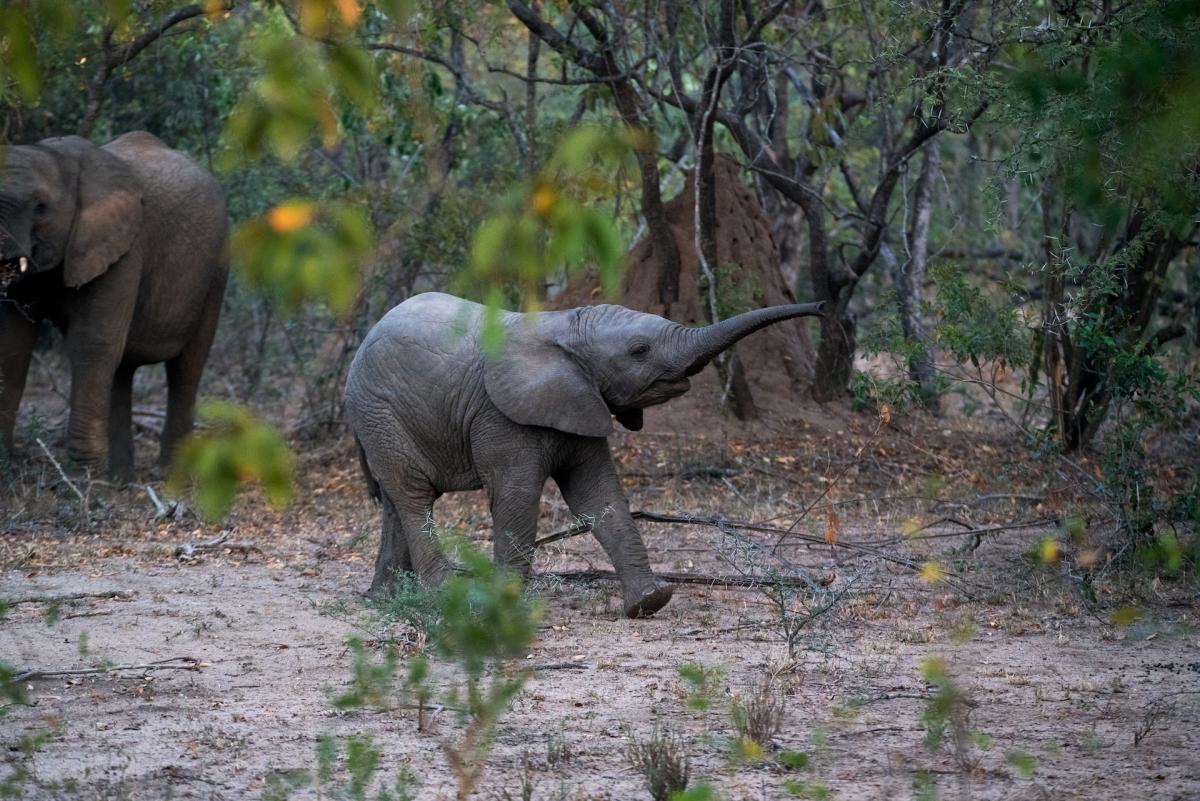
- Name: African forest elephant
- Scientific name: Loxodonta cyclotis
- Conservation status:
The African forest elephant is one of the most notorious species of wild animals in all of Africa. It is native to small and fragmented areas of the humid forests of the Congo Basin and West Africa.
This elephant usually lives in groups of up to 20 individuals, and greatly contributes to maintaining the composition of some forests by foraging on leaves, fruit, tree bark, and seeds. It is sadly on the brink of extinction due to habitat loss and agricultural expansion.
11. Mantled guereza
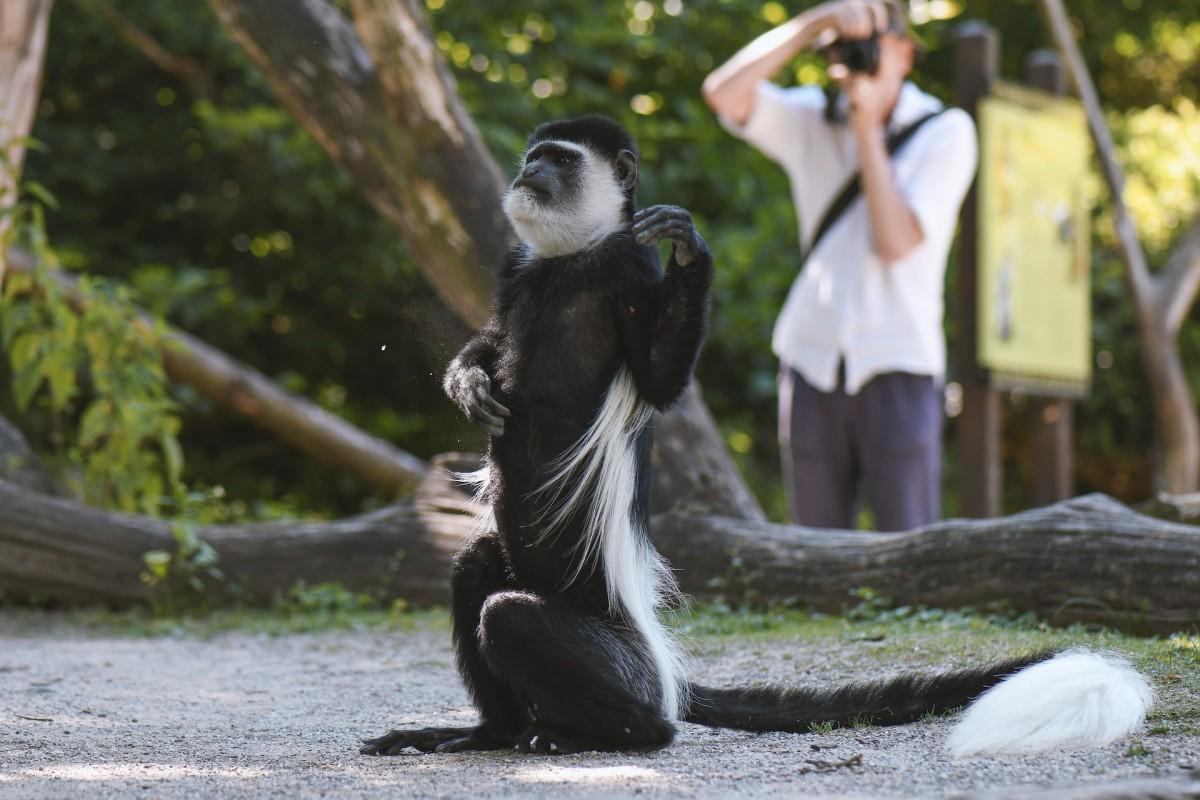
- Name: Mantled guereza
- Scientific name: Colobus guereza
- Conservation status:
The mantled guereza, also known as the Abyssinian black-and-white colobus, is a species of Old World monkey native to the majority of eastern and central Africa. It has characteristic white fringes of hair that run along each side of its body and is arboreal and diurnal.
This primate can be found in evergreen forests, and it feeds arthropods, fruits, leaves, and seeds. It lives in groups of 3 to 15 individuals, which usually include a dominant male, several females, and their offspring, while other mature males live in all-male groups.
12. Central chimpanzee
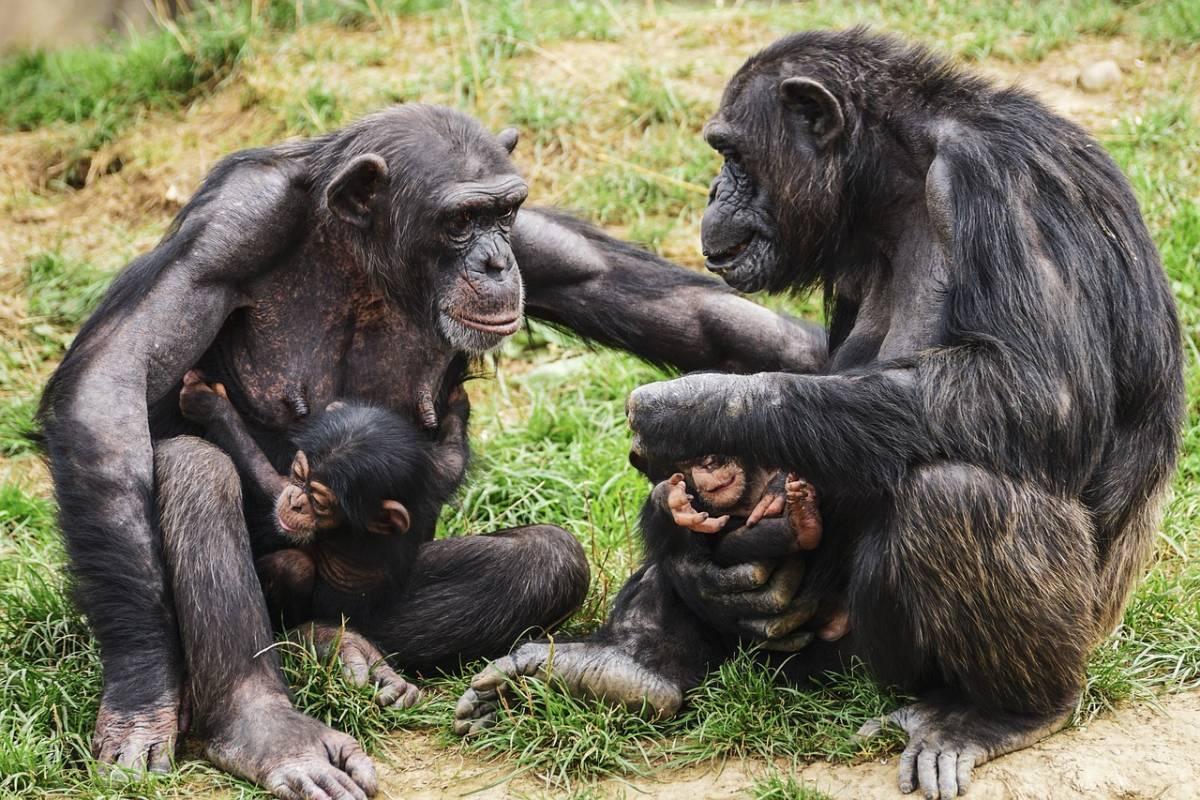
- Name: Central chimpanzee
- Scientific name: Pan troglodytes troglodytes
- Conservation status:
The central chimpanzee, also known as tschego, is a species of primate related to humans, orangutans, and gorillas. While it can be found in other countries, it almost exclusively lives in Congo, Cameroon, and Gabon, usually in tropical moist forests and wet savanna woodlands.
There are likely 47,000 to 78,000 wild chimpanzees in the wild, but they are scattered and can only thrive in undisturbed forests, which are becoming rarer and rarer.
13. Central African potto
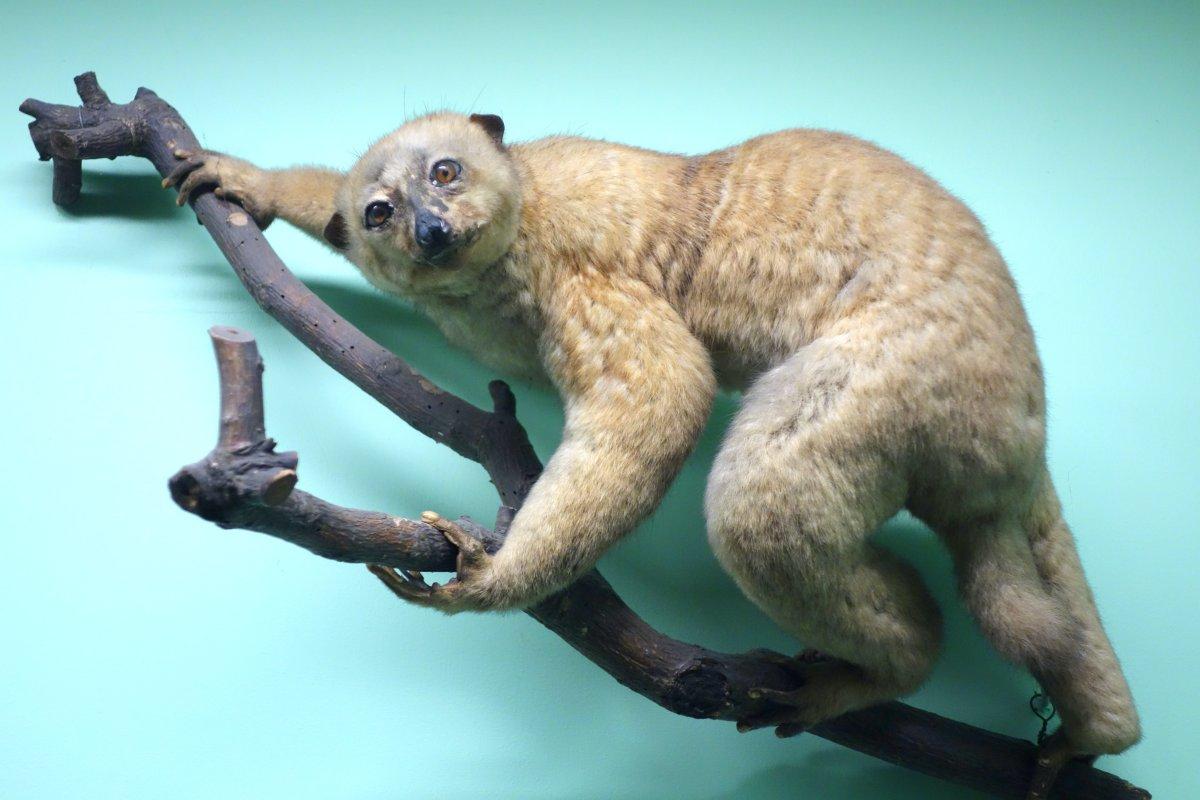
- Name: Central African potto
- Scientific name: Perodicticus edwardsi
- Conservation status:
The Central African potto, also known as Milne-Edward’s potto (hence its scientific name), is a species of primate native to most of Central Africa.
This species of monkey is highly versatile and can adapt to almost any environment. Because of this, it is considered of least concern, as it can live in disturbed and undisturbed forests, even near human populations. Its biggest threats are deforestation (on a local scale) and bushmeat hunting.
14. Olive baboon
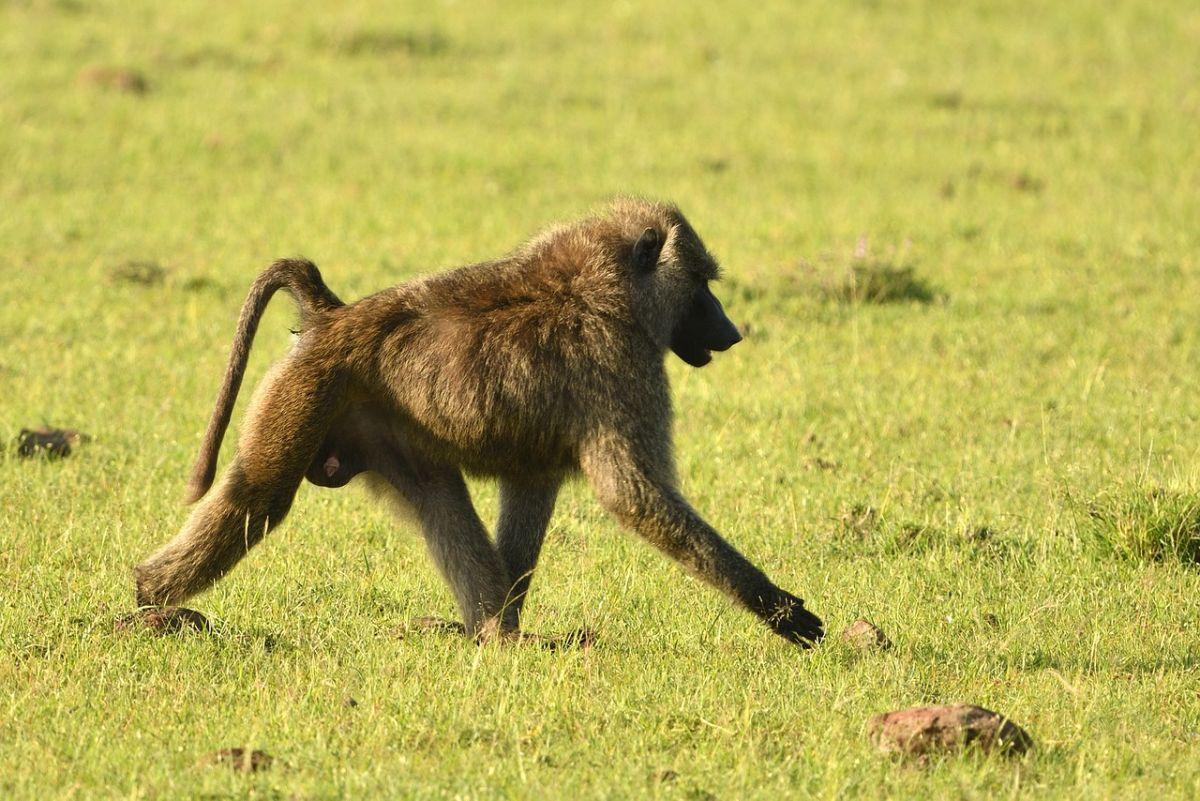
- Name: Olive baboon
- Scientific name: Papio anubis
- Conservation status:
The olive baboon, also known as the Anubis baboon, is one of the most widespread species of Old World monkeys in all of Africa: it is native to 25 countries from Mali to Ethiopia and Tanzania. Some scattered populations even exist in the mountainous regions of the Sahara.
This baboon is very notorious for living in large groups of up to 150 individuals, which are usually made of a few males, lots of females, and their offspring.
15. Egyptian fruit bat
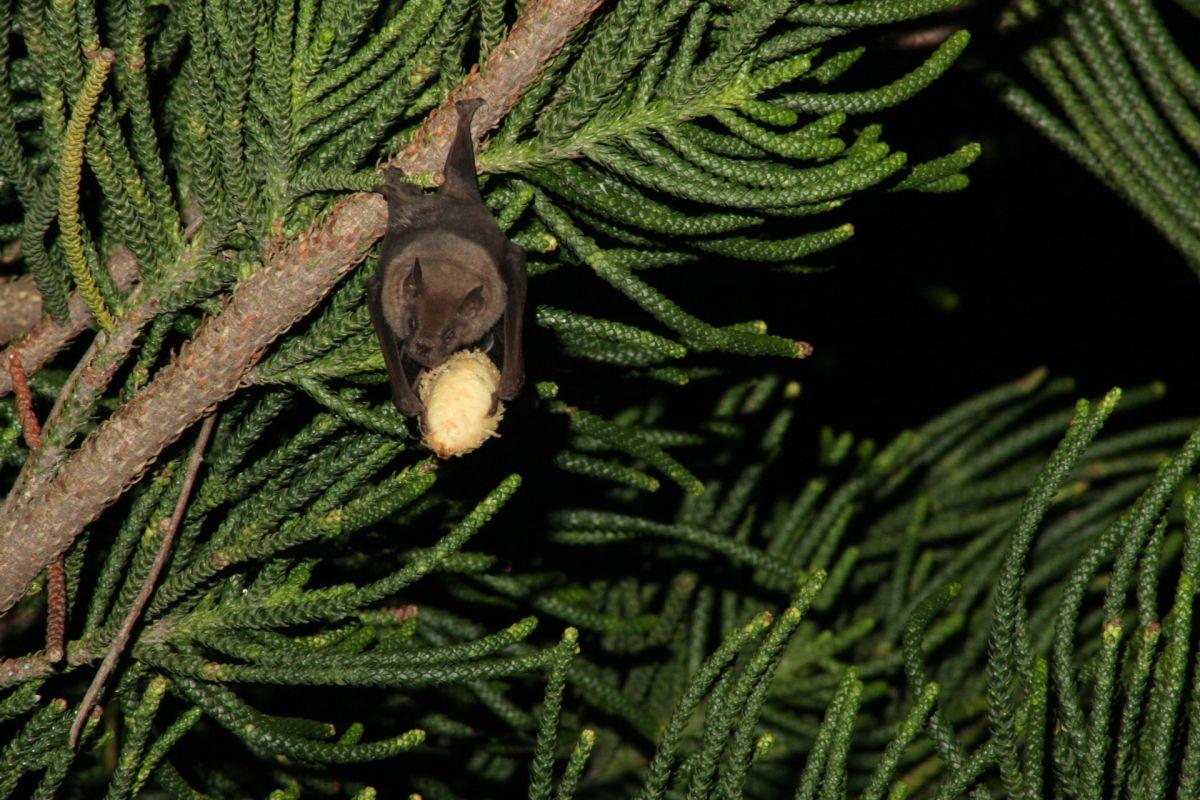
- Name: Egyptian fruit bat
- Scientific name: Rousettus aegyptiacus
- Conservation status:
The Egyptian fruit bat, also known as the Egyptian rousette, is a species of megabat native to Africa, the Middle East, the Indian subcontinent, and the Mediterranean.
It is a highly social animal that lives in the colonies of thousands of individuals. The Egyptian fruit bat uses echolocation and feeds on a variety of fruits depending on the season. Because of this, it is considered a pest by farmers. However, it plays an important role in dispersing seeds and pollinating.
16. Humpback whale
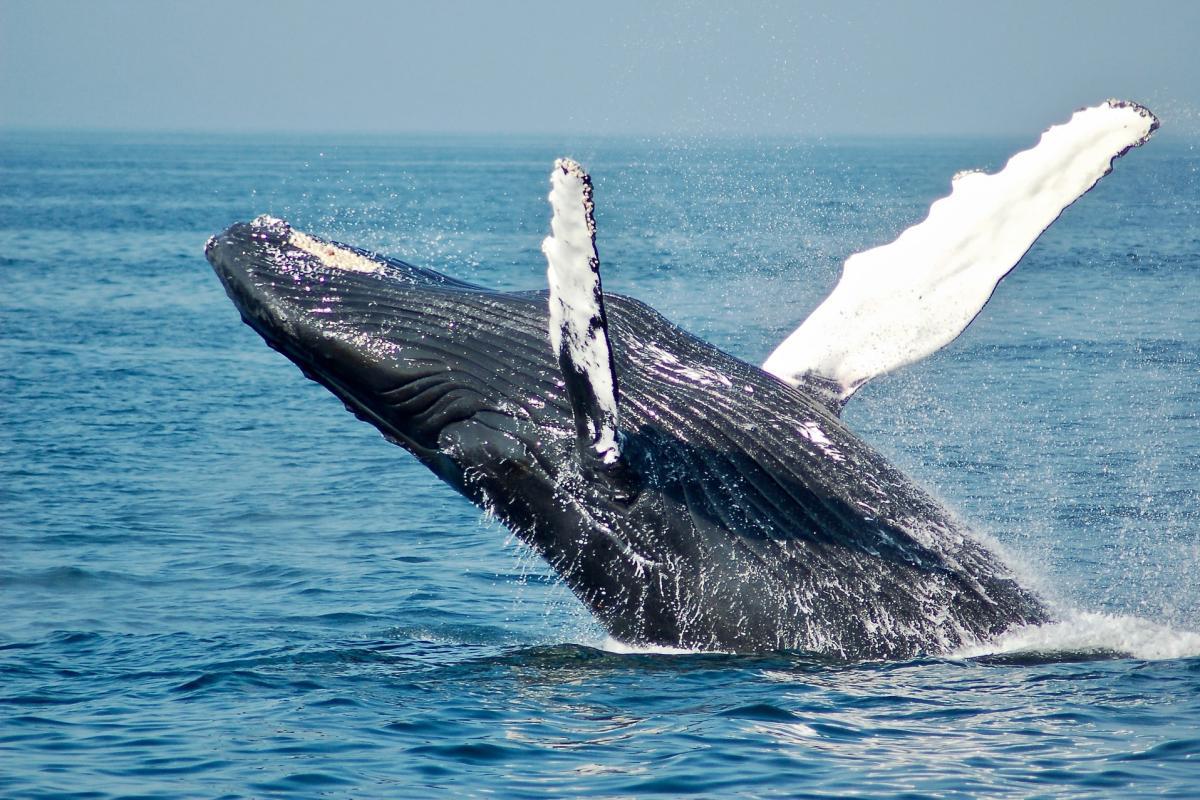
- Name: Humpback whale
- Scientific name: Megaptera novaeangliae
- Conservation status:
The humpback whale is a species of baleen whale and one of the largest species of rorqual: adults range in length from 12 to 16 m / from 39 to 52 ft. It is a particularly popular species for whale watchers due to its tendency to breach the surface quite often, alongside other distinctive behaviors.
Interestingly enough, male humpback whales produce a characteristic sound that can last up to 20 minutes, and that they can repeat for hours!
17. Rough-toothed dolphin
- Name: Rough-toothed dolphin
- Scientific name: Steno bredanensis
- Conservation status:
The rough-toothed dolphin is a species of dolphin that inhabits deep warm and tropical waters all around the world. Compared to other dolphin species, it is quite large, as adults range from 2.09 to 2.83 m / 6.9 to 9.3 ft, and males are larger than females. With a prominent bill, it has a distinct jaw and long ranges of teeth.
The population and range of the rough-toothed dolphin are poorly understood, as it inhabits very different areas, and lives in scattered populations.
18. African civet
- Name: African civet
- Scientific name: Civettictis civetta
- Conservation status:
The African civet is a large species of viverrid native to much of sub-Saharan Africa: except for the extreme southern tip of the continent and Madagascar, it can be found almost anywhere, usually in woodlands.
This civet is widely distributed and fairly common. It is a nocturnal and solitary animal that somewhat resembles the raccoon, and that feeds on almost anything, from rodents to eggs, seeds, berries, and fruits.
—
So there you have them, these were my 18 wild animals in the Congo. I hope you enjoyed this list and that you learned something new today.
In case you want to learn more about the Republic of the Congo wildlife, feel free to keep reading, as I still have lots of things to tell you about:
Endangered Animals of Congo
This is definitely the saddest part of the list, but it is essential to raise awareness. Because of this, let’s go through the list of endangered animals in the Congo.
Here are the animals in danger of extinction in Congo.
- None
- Slender-snouted crocodile
- Western gorilla
- Sand tiger shark
- Scalloped hammerhead
- African forest elephant
- and 15 more…
- Chimpanzee
- Whitespotted eagle ray
- Whale shark
- Grey parrot
- Green turtle
- and 30 more…
To see the full list of endangered species in Congo, head over to the International Union for Conservation of Nature’s Red List.
What is the National Animal of Congo?
The national animal of Congo is the African lion.
Just like many other African countries, the lion is what best represents Congo. It is a symbol of might and of pride, and it has always had significant importance in local cultures and folklore. In some tribes, it is even considered a symbol in shamanistic rituals, and the scars it inflicts are seen as a sign of courage.
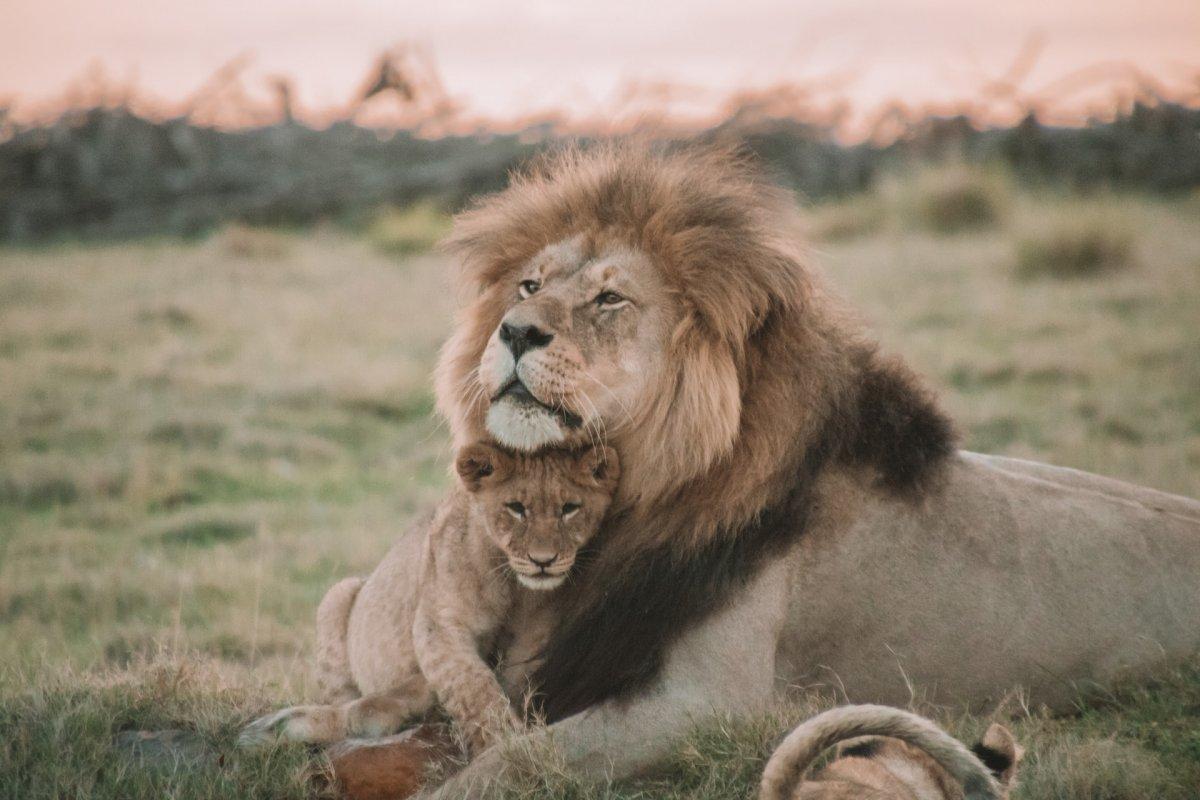
How Many Animals Native to Congo?
What is the diversity of native animals in Congo?
Let’s look at the total number of species of Chordata (mammals, birds, fishes, and reptiles).
Total number of animal species in Congo: 2,226 (14,205 in total in Sub-Saharan Africa)
How many lions are in Congo?
The lion population in Congo (and in the world) is seriously threatened. Where there used to be much more, there are now not even 25,000 wild individuals left. Because of this, protection plans have been launched, in hopes to save the most iconic wild animal on the continent.
What predators are in the Congo rainforest?
Where there is rainforest, there is a safe cover. For prey… but also for predators. The rainforest is the perfect place to hide and stalk, and there are many very dangerous predators in there.
The most famous of them is probably the leopard. It is definitely not alone though, as golden cats, servals, lions, jackals, and otters are also found in the wilderness of Congo.
More About Animals in the World!
Loved these Congo animal facts? Want to see what animals live in other countries?
Then check out these posts:
Or click here to see ALL the facts up on the blog! Spoiler alert: there’s A LOT of them.
Share the knowledge! Click on the buttons below to share information about these famous animals of the Congo with your friends, and help them learn more about the world 🙂
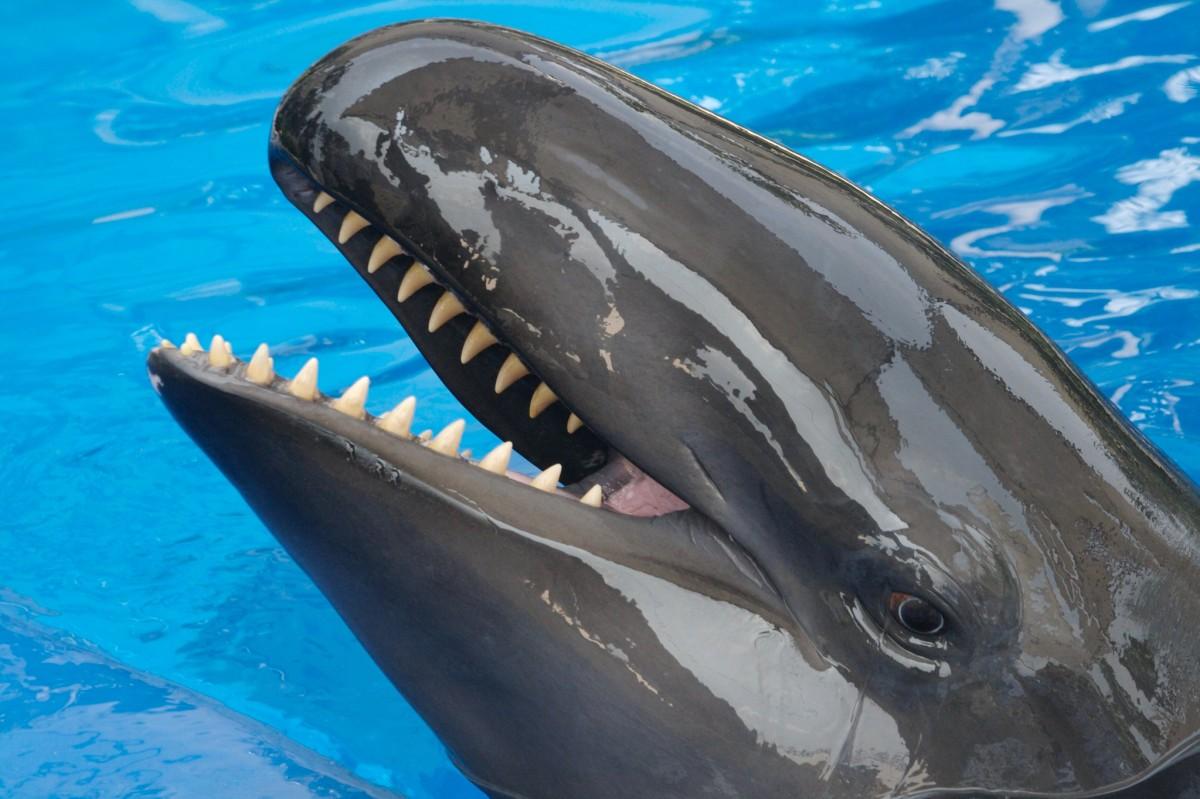
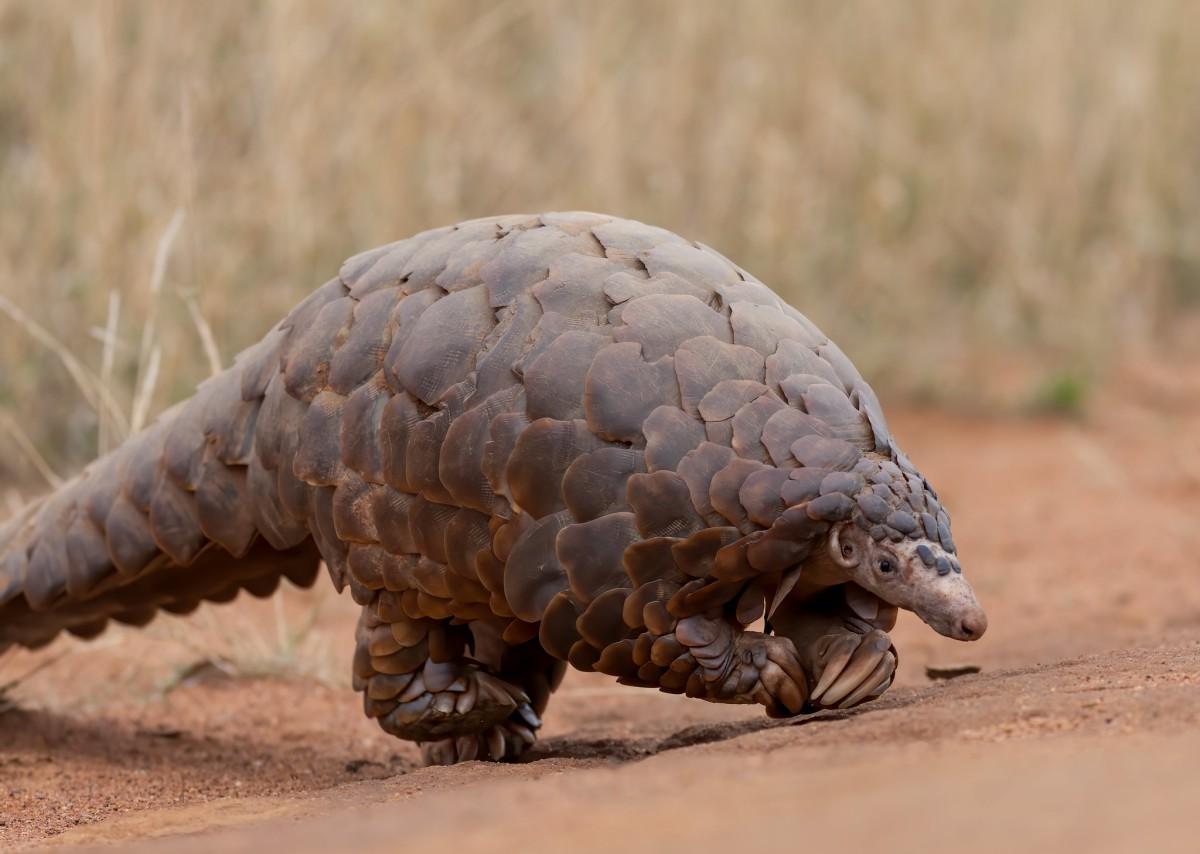
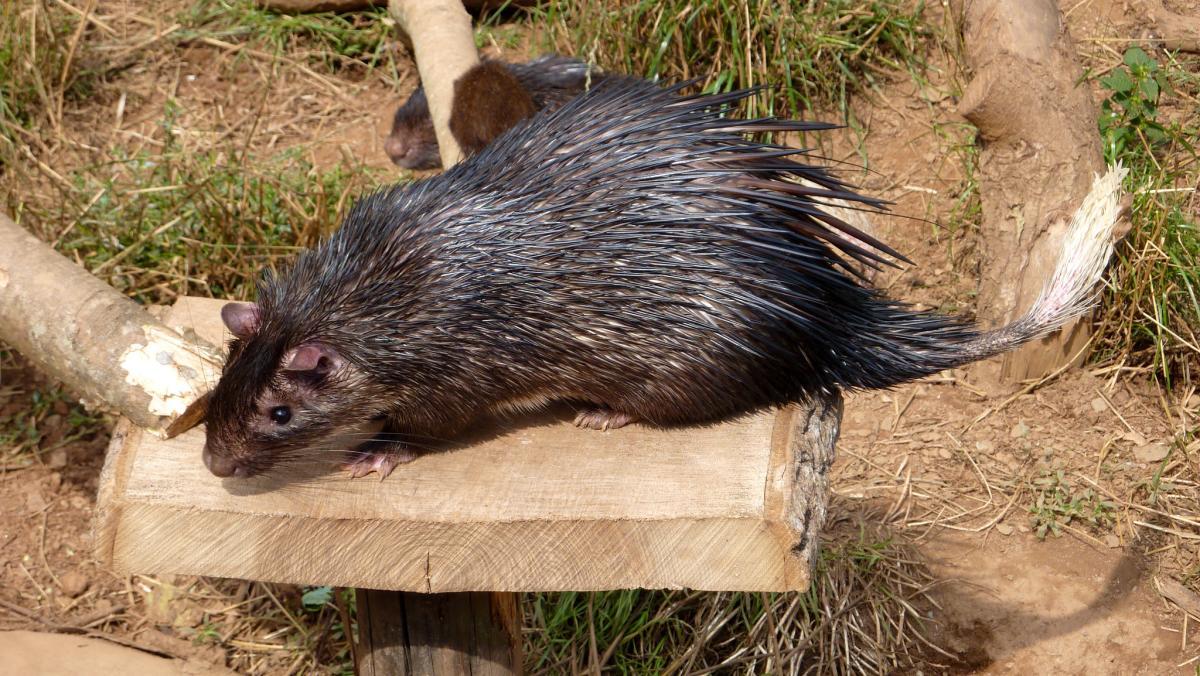
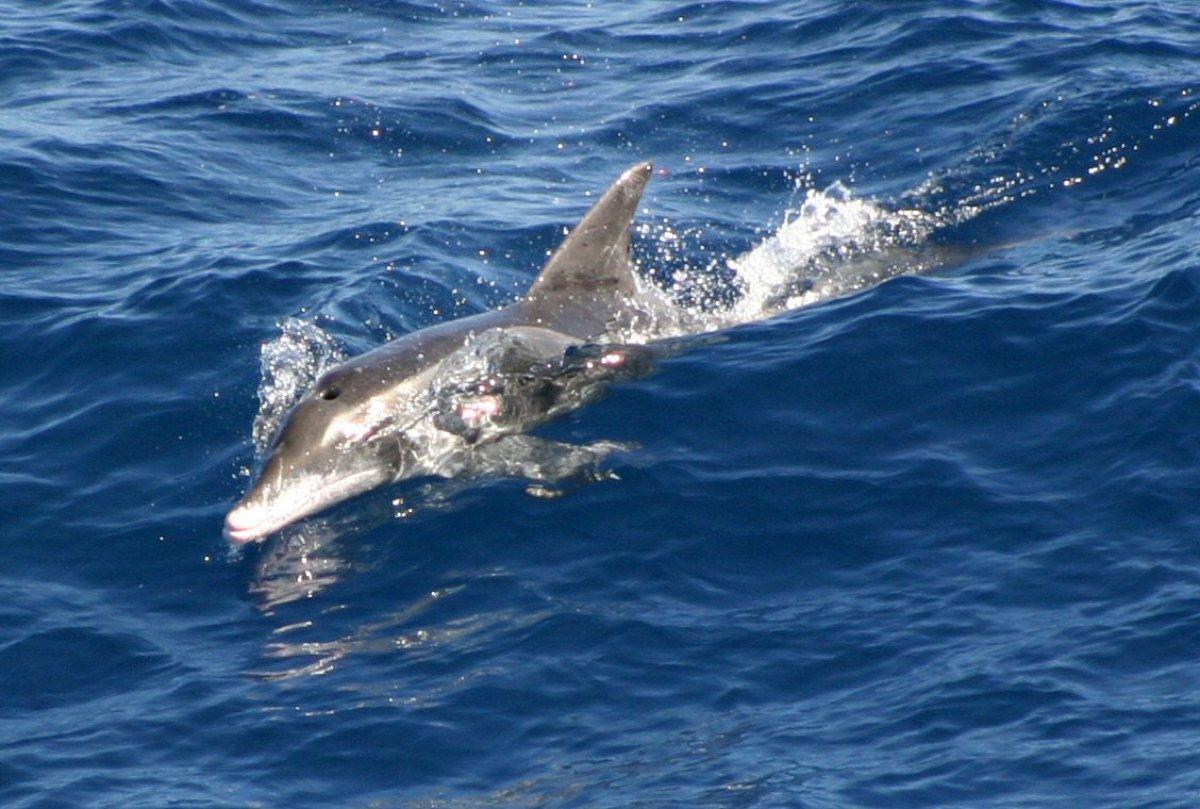
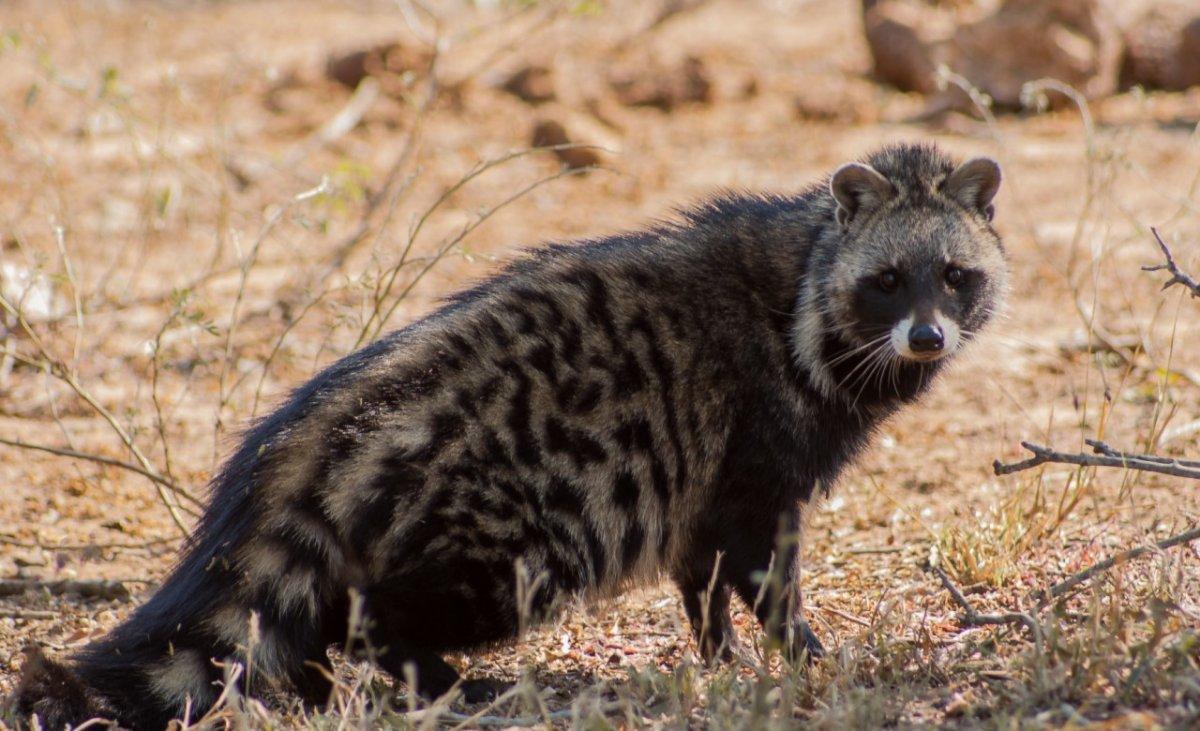

![28 Wild Animals in Canada [Wildlife in Canada]](https://www.kevmrc.com/wp-content/uploads/2023/01/28-wild-animals-in-canada.jpg)
![27 Wild Animals in France [Wildlife in France]](https://www.kevmrc.com/wp-content/uploads/2022/06/27-wild-animals-in-france.jpg)
![10 Wild Animals in Samoa [Wildlife in Samoa]](https://www.kevmrc.com/wp-content/uploads/2023/01/10-wild-animals-in-samoa.jpg)